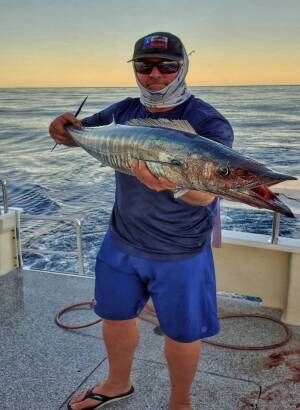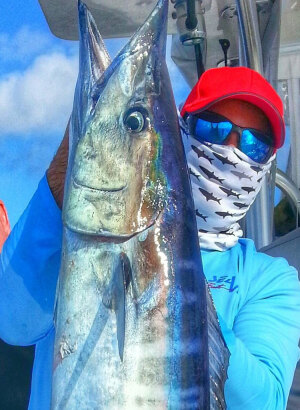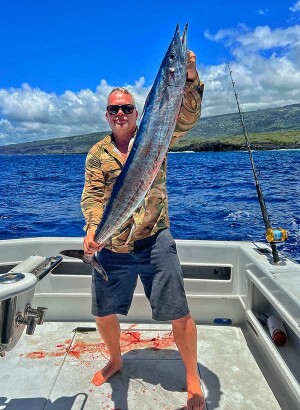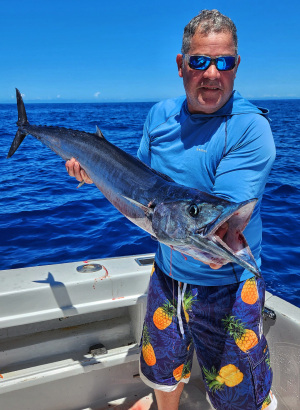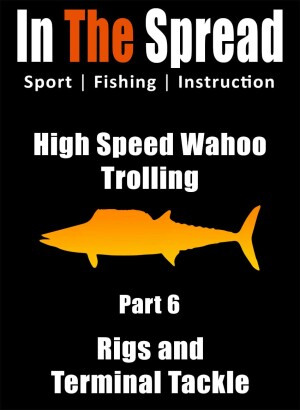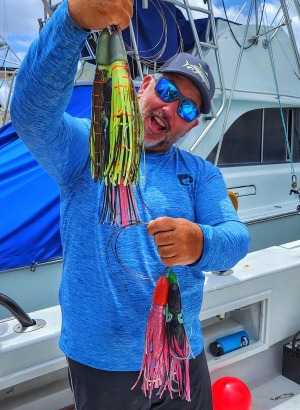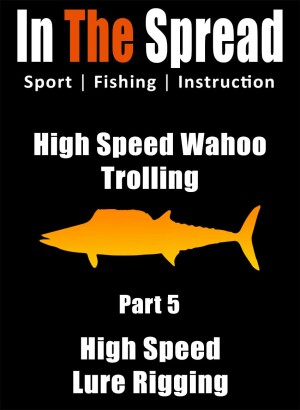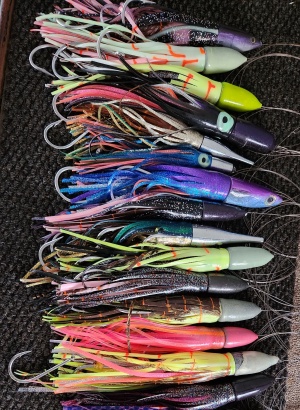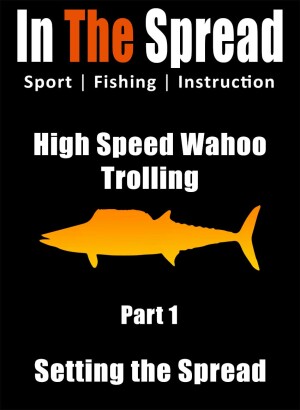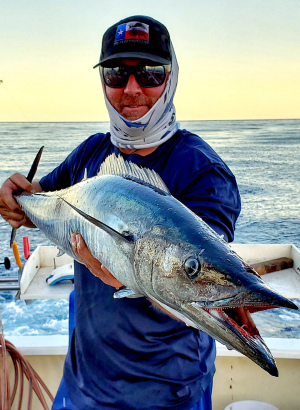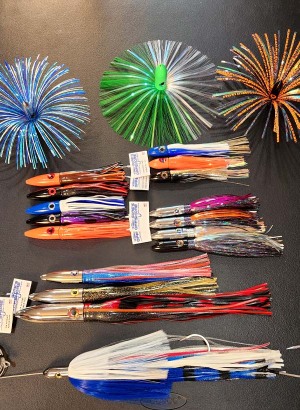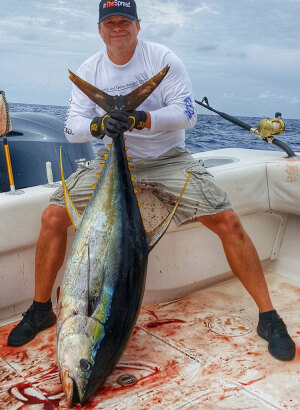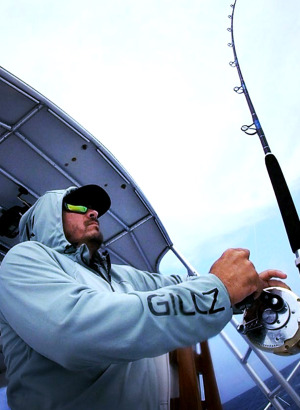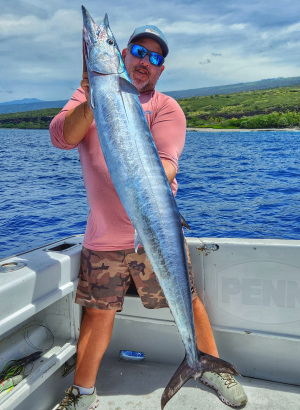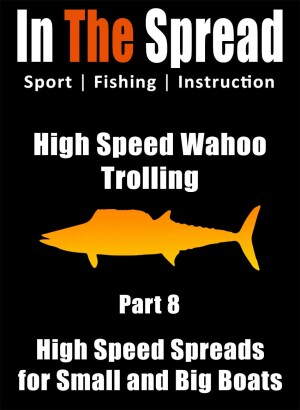Wahoo fishing is a popular activity for sport fishermen due to its speed and power. In The Spread offers educational videos on wahoo fishing, providing knowledge and tools for successful experiences. Effective baits for wahoo include live baits, trolled lures, and cut baits. In The Spread provides resources for both experienced and new anglers.

How to Catch Wahoo – Start with Knowledge
Wahoo fishing is a popular activity among anglers due to the excitement and challenge that comes with catching these fast-swimming gamefish. Wahoo are known for their speed and power, making them a sought-after catch for sport fishermen.
In The Spread provides sport fishing educational videos through our video library. You can watch them here: Wahoo Fishing Videos. The company is dedicated to providing anglers with the knowledge and tools they need to have successful fishing experiences, including information on how to catch wahoo. With its focus on providing high-quality fishing education, In The Spread is a valuable resource for anyone interested in wahoo fishing.
Baits for Wahoo
Wahoo are known for their aggressive feeding habits and will attack a variety of baits. The most effective baits for wahoo include:
- Live baits: Live baits such as ballyhoo, mullet, and cigar minnows are popular for wahoo fishing. These baits imitate the natural prey of wahoo, making them more likely to strike.
- Trolled lures: Trolled lures, such as skirted trolling lures, plastic squids, and rigged ballyhoo, are also effective for catching wahoo. These lures imitate the movement and appearance of injured or fleeing baitfish, triggering a predatory response in wahoo.
- Cut baits: Cut baits, such as bonito or tuna, are also used for wahoo fishing. These baits are rigged on hooks and trolled behind the boat to attract wahoo.
In The Spread offers a variety of educational resources for anglers looking to improve their wahoo fishing skills, including information on the best baits and lures for wahoo. Whether you're an experienced angler or just starting out, In The Spread has the resources you need to have a successful and enjoyable fishing experience.
How to Fish for Wahoo
There are several different techniques used to catch wahoo, including trolling, live bait fishing, and jigging. Each of these methods has its own unique advantages and challenges, and the best fishing method will depend on the individual angler's preferences and the conditions in which they are fishing.
- Trolling: Trolling is one of the most popular methods for catching wahoo. It involves pulling lures or baits behind a boat at a slow to moderate speed to imitate the movement of a fleeing baitfish. Trolling is effective for catching wahoo because it allows anglers to cover a large area and locate schools of feeding wahoo.
- Live bait fishing: Live bait fishing for wahoo involves using a live bait, such as a ballyhoo or mullet, rigged on a hook and trolled behind the boat. This method is effective because it imitates the natural prey of wahoo and can trigger a predatory response in these fast-swimming gamefish.
- Jigging: Jigging is a technique that involves using a jigging rod to vertically jig a weighted lure or bait up and down in the water column. Jigging is effective for catching wahoo in areas with heavy structure, such as deep drop-offs or shipwrecks, as it allows anglers to fish in these areas and target wahoo that are holding in the structure.
In The Spread offers educational resources for anglers looking to improve their wahoo fishing skills, including information on the best techniques and methods for catching these fast-swimming gamefish. Whether you're an experienced angler or just starting out, In The Spread has the resources you need to have a successful and enjoyable fishing experience.
Is Wahoo Hard to Catch?
Wahoo can be both challenging and rewarding to catch, with the difficulty level varying depending on several factors. Some anglers consider wahoo to be one of the hardest gamefish to catch, while others believe that they are relatively easy to target.
The following are factors that can affect the catchability of wahoo:
- Location: Wahoo can be found in a variety of habitats, ranging from deep offshore waters to nearshore areas. The difficulty level of catching wahoo will depend on the location, as well as the angler's experience fishing in that area.
- Bait: The type of bait used can have a significant impact on the catchability of wahoo. Some anglers find that live bait is the most effective for catching wahoo, while others prefer to use artificial lures or dead bait.
- Equipment: The type of fishing gear and tackle used can also affect the catchability of wahoo. High-quality fishing rods, reels, and lines are important for catching these fast-swimming gamefish, as well as the proper rigging of the bait or lure.
- Weather and Sea Conditions: The weather and sea conditions can have a significant impact on the catchability of wahoo. Stormy or rough sea conditions can make it difficult to fish for wahoo, while calm, clear waters can increase the chances of catching these elusive gamefish.
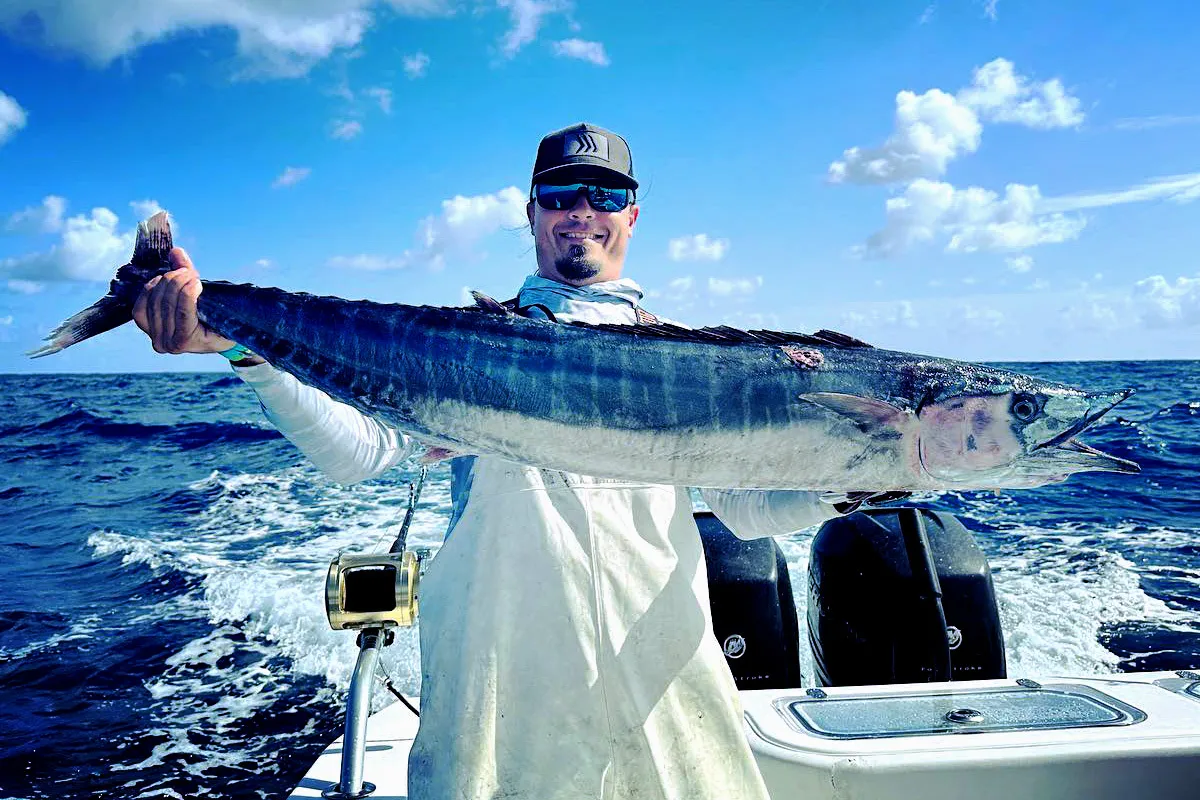
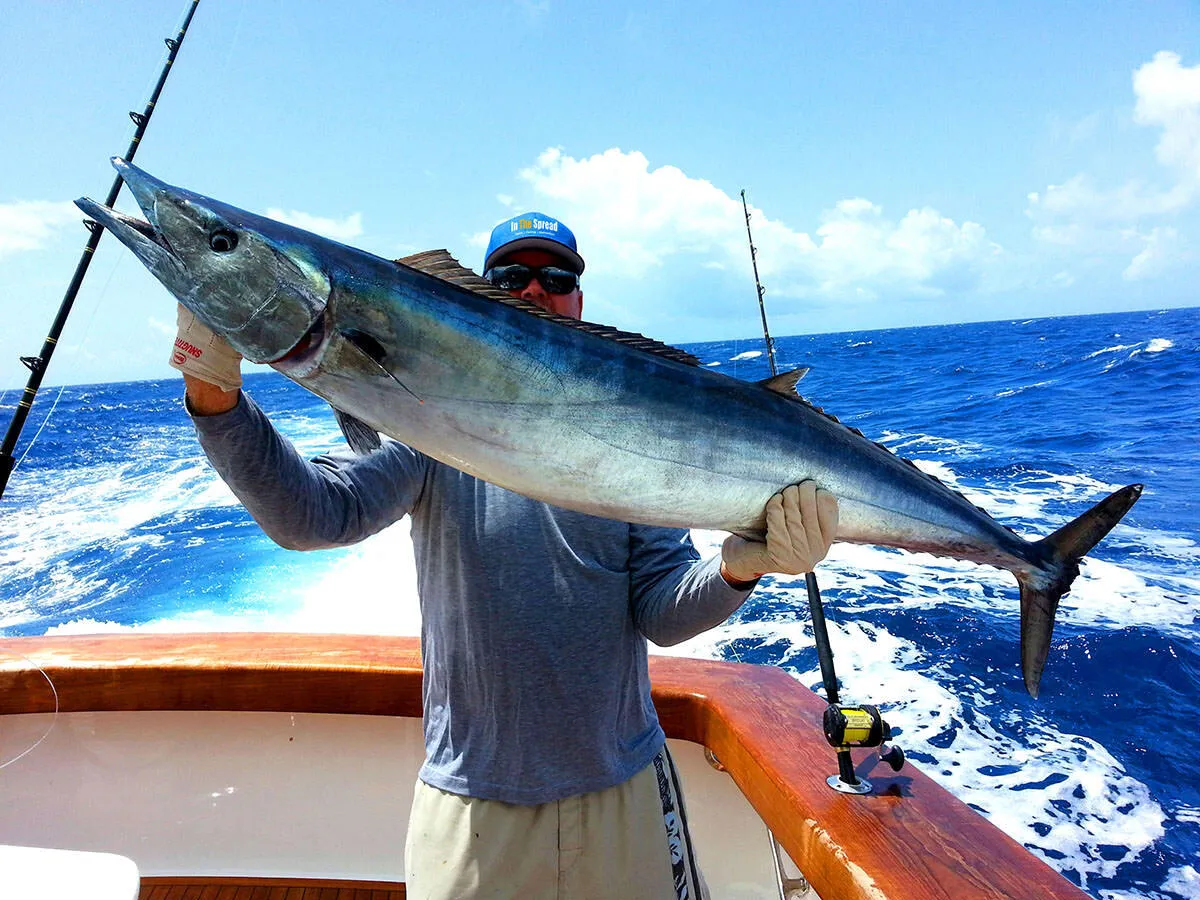
The Best Time to Catch Wahoo
In the Gulf of Mexico, wahoo are commonly caught from late autumn to early spring when the water temperature is around 70°F. In the Atlantic Ocean, wahoo can be caught from spring to early autumn when the water temperature is in the mid-70s. In California, wahoo are caught year-round but peak during the late spring and summer months.
The key to success in wahoo fishing is to target them during their seasonal patterns when they are actively feeding. By fishing during the right time of year, anglers increase their chances of a successful catch.
It is also important to keep in mind that the ideal time of year to catch wahoo can vary based on the specific location and water conditions. This is why it is recommended to seek local knowledge and consult with fishing experts to determine the best time to fish for wahoo in a specific area.
The following are some of the best times to catch wahoo:
- Summer: During the summer months, wahoo can be found in warmer waters near the equator and in the Gulf of Mexico. This is a prime time to catch wahoo as they are more active and feeding in these warmer waters.
- Winter: In the winter months, wahoo are found in deeper, colder waters and are often targeted by anglers fishing offshore. This is a good time to catch wahoo as they are still feeding and are more concentrated in these deeper waters.
- Spring and Fall: During the spring and fall months, wahoo can be found in transition as they move between their summer and winter habitats. These times can be more challenging for wahoo fishing, but can also offer some of the best catches as wahoo are more active and feeding during these transitional periods.
It's important to note that the ideal time to catch wahoo can vary depending on the region, as well as local weather and sea conditions. Anglers can consult local fishing reports and forecasts, as well as the resources available through In The Spread, to determine the best time to fish for wahoo in their area.
In conclusion, the best time to catch wahoo will vary depending on a number of factors, including the angler's location, the time of year, and local weather and sea conditions. By using the seasonal patterns and guidelines outlined above, anglers can increase their chances of catching wahoo and experiencing the thrill of this exciting gamefish.
How to Rig a Wahoo Lure
Rigging a wahoo lure correctly is crucial to the success of your wahoo fishing trip. There are many different rigging methods and each has its own advantages and disadvantages, but choosing the right rig can mean the difference between catching wahoo or not.
One of the most popular and effective rigging methods for wahoo is high-speed trolling. This involves using a lure that is designed for high-speed trolling, such as a jet-head or feather lure, and rigging it to a strong, heavy-duty fishing line. The line is then attached to a trolling weight, which is used to control the depth of the lure and to help keep it in the strike zone where the wahoo are feeding.
When rigging a wahoo lure for high-speed trolling, it's important to use the right gear, including high-quality fishing line, strong hooks, and durable trolling weights. It's also important to pay close attention to the type of rig you use, as well as the size, shape, and color of the lure.
For more detailed information on rigging wahoo lures for high-speed trolling, check out our article at the following link: https://inthespread.com/rigging-wahoo-lures-high-speed-trolling
In conclusion, rigging a wahoo lure correctly is key to catching these elusive gamefish. By using the right gear and techniques, anglers can maximize their chances of catching wahoo and experiencing the thrill of this exciting gamefish.
Wahoo Fishing in Florida
Wahoo fishing in Florida is a popular and exciting activity for both recreational and professional anglers. With its warm waters, diverse underwater landscapes, and abundant populations of wahoo, Florida offers some of the best wahoo fishing opportunities in the world.
The best places to fish for wahoo in Florida can vary depending on the time of year and other factors, such as water temperature, ocean currents, and fishing pressure. Some of the most popular and productive areas for wahoo fishing in Florida include the Gulf Stream, the Florida Keys, and the offshore waters of the Atlantic Ocean.
When fishing for wahoo in Florida, it's important to choose the right gear, including high-quality fishing line, strong hooks, and durable trolling weights. It's also important to choose the right lures, such as jet-head lures, feather lures, or other high-speed trolling lures.
In conclusion, wahoo fishing in Florida is a popular and exciting activity for anglers of all skill levels. With its abundant populations of wahoo and diverse underwater landscapes, Florida offers some of the best wahoo fishing opportunities in the world. Whether you're a seasoned angler or just starting out, there's no better place to catch wahoo than in the Sunshine State.
Wahoo Fishing Destinations in the U.S.
When it comes to determining the best place to fish for wahoo, anglers should consider several factors such as the water temperature, current patterns, and the availability of baitfish. Wahoo are highly migratory species, so the location of their schools will vary depending on the season. During the summer months, wahoo can be found along the continental shelf, while during the winter months, they move closer to shore.
Another factor to consider is the ocean floor structure. Wahoo are often found near underwater canyons, drop-offs, and ledges where baitfish are abundant. These areas provide ample opportunities for anglers to target wahoo, as the fish are often found feeding near these structures.
In conclusion, the best place to fish for wahoo will vary depending on the time of year and environmental conditions. However, areas along the Atlantic and Pacific coasts, especially in the Gulf of Mexico, North Carolina, Florida, California and Hawaii offer excellent wahoo fishing opportunities for anglers.
The Optimal Depth for Wahoo Fishing
The optimal depth for wahoo fishing can vary depending on several factors including water temperature, the time of year, and the presence of other fish species. Generally, wahoo are found in deeper waters, typically ranging from 150-300 feet. Some anglers have success fishing in shallower waters during certain times of the year, such as during the spring when wahoo are known to move inshore to feed on baitfish. The key to finding the right depth for wahoo is to continually experiment and adjust based on the conditions and your observations of the fish. It's also important to pay attention to the depth at which you're catching other species, as this can provide valuable information on where wahoo might be found. Overall, finding the ideal depth for wahoo fishing requires a combination of experience, knowledge of seasonal patterns, and careful observation of the environment.
Trolling for Wahoo
Trolling is one of the most effective methods for catching wahoo. The key to successful trolling is to maintain a consistent speed and spread while presenting your lures at the right depth. The optimal trolling speed for wahoo can vary depending on the conditions, but most anglers aim to troll between 6-15 knots, depending on whether you are slow trolling or high speed. A spread of 4-6 lines is common, with the lures placed at different depths to cover the water column.
When setting up for trolling, it's important to choose the right gear. Wahoo fishing rods should be strong and sensitive, with a fast action tip for detecting bites. A trolling weight or planer is used to get the lure down to the desired depth. The size of the trolling weight will depend on the speed of the boat and the weight of the lure.
In terms of lures, wahoo are attracted to flashy, high-speed lures that mimic injured baitfish. Skirted trolling lures in a variety of colors, including green, blue, and pink, are popular choices. The size of the lure should be selected based on the size of the baitfish in the area.
Overall, trolling is a great method for catching wahoo, but success is dependent on getting the speed, spread, and setup right. For more information on wahoo trolling techniques, you can check out the resources available on the "In The Spread" website.
Tackle and Gear for Wahoo Fishing
The gear used for wahoo fishing can have a significant impact on the success of the trip. Having the right equipment can make a difference between a great day on the water and a frustrating one. The essential gear for wahoo fishing includes the following:
- Fishing Rods: Wahoo fishing requires strong and durable fishing rods that can handle high-speed trolling and the power of these fast-swimming fish. The best rods for wahoo fishing are typically made of high-quality materials and are designed with fast action and a strong backbone.
- Hooks: The right hooks can make a significant difference in the success of wahoo fishing. The best hooks for wahoo are those that are sharp and strong, with a thin wire diameter that can penetrate the tough mouth of these fish.
- Lures: Wahoo fishing lures come in a variety of shapes, colors, and sizes, and can make a big difference in the success of a fishing trip. The best wahoo lures are those that mimic the prey of these fish, including small fish, squid, and other baitfish. Trolling lures, such as feathers and skirted lures, are particularly effective for wahoo fishing.
- Tackle: Other essential tackle for wahoo fishing includes fishing line, leaders, and terminal tackle, such as swivels, snaps, and split rings. The best fishing line (mainline) for wahoo fishing is typically braided line, which is strong, abrasion-resistant, and provides excellent sensitivity. There are some fishermen that still love and swear by wire line. There are pros and cons to both.
- Wahoo Trolling Setup: The trolling setup is an important part of wahoo fishing, and it includes the trolling spread, trolling weights, and the trolling rig. The ideal trolling spread for wahoo fishing should be wide enough to cover a large area of water, but not so wide that it becomes difficult to control the boat. The trolling weights help to get the lures down to the desired depth, and the trolling rig should be sturdy and reliable, allowing the angler to fight the fish effectively.
Conclusion
In this article, we explored the exciting world of wahoo fishing, providing a comprehensive guide to catching this popular game fish. We discussed the best baits for wahoo, including both natural and artificial options, and highlighted the most effective fishing methods, including trolling and casting. We also discussed the difficulty level of wahoo fishing, the optimal depth and trolling speed, the best time of year to fish, and the ideal locations for wahoo.
In addition, we provided a link to a step-by-step video presentation to rigging wahoo lures, and discussed the essential gear, including rods, hooks, lures, and other tackle. Overall, the article aimed to provide valuable information for wahoo anglers of all skill levels, and introduced the brand "In The Spread" as a source of high-quality sport fishing education. Whether you're a seasoned angler or just starting out, this article is a must-read for anyone looking to catch more wahoo.

